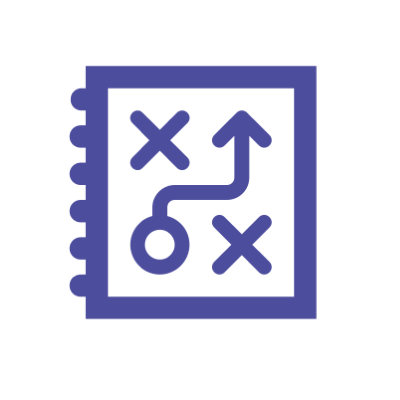Demystifying DoD Acquisition and Contracting for Industry
Doing business with the DoD can be difficult…but it doesn’t have to be.
Do you have leading commercial technologies and solutions? Are you seeking investment capital, funding, or test markets for your technology? Do you need help entering the DoD marketplace?
The DoD needs your help to strengthen our national security!
These pages help demystify doing business with DoD so that you can become a part of the $300-500B annual defense marketplace.
Find out how to do business with the DoD
understanding DoD
getting started
what are you trying to do?
key considerations
understanding the DoD
DoD contracting
what DoD buys
DoD innovation ecosystem
how DoD is evolving
culture, strategies, and terminology
spending in critical technology areas
navigate the DoD innovation ecosystem environment and locate opportunities
strategic transformations in acquisition, contracting, and tech development
getting started
traditional vs non-traditional contractors
entry points
registration/ certification
partnering
contractual implications for traditional vs non-traditional contractors
find opportunities to get on contract with DoD
requirements to do business with DoD
partnering opportunities for doing business with DoD
what are you trying to do?
conducting studies, R&D, and/or prototypes
developing or producing systems
mature product or service to sell the DoD
something else
opportunities for experimental research and prototypes
opportunities for scaling prototypes or solutions
opportunities for “off-the-shelf” solutions with minimal modification for DoD use
opportunities if not a clean fit with other categories
key considerations
DoD timelines to award
intellectual property
resources considerations
supply chain
manage expectations for DoD contract award timelines
understand DoD intentions for IP to protect and negotiate
considerations for managing resources and overhead when doing business with DoD
understand DoD supply chain risks and concerns
FAQs
Should I join an Other Transaction Consortium?
Joining one (or more) OT Consortia can expand opportunities to do business with the government as well as broaden partnering opportunities. However, consortium membership isn’t free, and it doesn’t guarantee a government contract award.
Visit the Other Transactions and Other Transaction Consortia page for more details.
What are the Intellectual Property considerations of working with the DoD?
There is a lot to understand! Please visit the Intellectual Property page for an in-depth discussion and tips on protecting your IP.
Do I need to register my business in DoD systems?
Yep! The good news is that it is free…the bad new is there are multiple processes/systems involved. Please visit the Registration and Certification page to learn how to get set up and tips to (hopefully) make it easier.
What is a Cost Accounting System (CAS) and do I need one?
If you’re a small business or non-traditional contractor, you won’t have to worry about CAS, or Cost Accounting Standards and if you’re a large business usually subject to CAS, you won’t have to deal with it under Other Transactions. Visit the Traditional vs Non-Traditional Contractor page for more on CAS.
However, you may still need an “approved accounting system”—not the same thing as CAS—if you want a cost type contract or Government financing (Visit Understanding DoD Contracting page to learn more about cost vs fixed-price contract types). If this is your first contract, you probably won’t already have an approved accounting system, so don’t be confused by who is doing the approving or think that you can make that determination on your own. To deem your accounting system adequate and approved for a cost type contract, the Government will request that the Defense Contract Audit Agency (DCAA) review your accounting system to ensure it complies with Generally Accepted Accounting Principles (GAAP), can track costs, etc. This is a really big deal for a small business and a major milestone in working with the DoD.
What's the difference between Cost-Plus and Fixed-Price contract types?
Firm-Fixed-Price (FFP) is typical of commercial items, research and development studies where you’ve written your own statement of work, and any product or service that can be defined well enough that you can price it. Under a FFP contract, the contractor assumes all the risk so if it costs you more than agreed to, you eat the loss. If you manage your costs well and have funds left over at the end of the contract, that’s profit for you.
Cost-plus contracts put the risk of underestimating the costs on the Government. For Cost-Plus-Fixed-Fee (CPFF) contracts, the DoD reimburses the allowable incurred costs and pays a fixed-fee amount that is negotiated at the beginning of the contract. It may be negotiated as a percentage of the estimated costs but it is written into the contract as a precise amount, not a percentage. If you “overrun” the costs, your fee is the same, or fixed. You can be reimbursed for the overage of costs but you won’t receive additional fee unless the overage is a result of new work that has been added to the contract and was not anticipated in the original negotiation, such as an additional task that the DoD wants performed that you did not propose.
Please visit the Understanding DoD Contracting page for additional information.
What is the Great Power Competition (GPC) and why is it so challenging?
The Great Power Competition is a recognition that the “unipolar moment” the United States enjoyed since the end of the Cold War is effectively over, and that two nations in particular have the will and increasingly the strength and/or tactics to challenge American interests. An ascending China and a determined Russia both pursue national security strategies that strive for a greater share of global influence. In doing so each explicitly includes ends that erode U.S. advantages in the international system and ultimately constrain U.S. freedom of action.
This new dynamic presents complex challenges for the United States. Unlike the previous long-term competition with the Soviet Union – in which the United States opposed one adversary with one opposing ideology – the current long-term competition involves two strong contenders, each with differing and to some third party nations appealing ideologies, regional and perhaps global aspirations, and multiple means to compete against the United States. This is compounded by rapid globalization and the interwoven nature of many nation-states’ economies, including between these three GPC nations. Finally, with the growing rate of international citizen exchange and accelerating technology diffusion, the tangible lines of territorial boundaries between nations are blurred making clear setting of policy against a competitor difficult.
Why should I care about the GPC and what's the impact for my business?
Don’t take it simply from us, take it from FBI Director Wray:
“The greatest long-term threat to our nation’s information and intellectual property, and to our economic vitality, is the counterintelligence and economic espionage threat from China. It’s a threat to our economic security—and by extension, to our national security…
But if you think these issues are just an intelligence issue, or a government problem, or a nuisance largely just for big corporations who can take care of themselves—you could not be more wrong. It’s the people of the United States who are the victims of what amounts to Chinese theft on a scale so massive that it represents one of the largest transfers of wealth in human history. If you are an American adult, it is more likely than not that China has stolen your personal data. Our data isn’t the only thing at stake here—so are our health, our livelihoods, and our security…”
Director Wray goes on to outline the massive and sobering scale of theft and espionage that is rampant today, as well as China’s strategies and techniques for achieving this. As a business owner, it’s critical that you’re aware of and knowledgeable upon these overt and covert tactics so that you can better protect your product, your employees, and your business. In addition, tracing your funding sources and supply chains will become even more important for ensuring secure business transactions and opportunities.
Some key statistics Director Wray shares:
- “We’ve now reached the point where the FBI is opening a new China-related counterintelligence case about every 10 hours. Of the nearly 5,000 active FBI counterintelligence cases currently underway across the country, almost half are related to China…”
- “Over the past decade, we’ve seen economic espionage cases with a link to China increase by approximately 1,300 percent…”
- “In 2015, China’s hackers stole the personal data of 80 million of that [American] company’s current and former customers…”
- “In 2014, China’s hackers stole more than 21 million records from OPM, the federal government’s Office of Personnel Management…”
Read the full speech here or watch the video.
Does working with China prevent me from business opportunities with DoD?
Possibly. China presents a challenge to the DoD from a risk perspective. Certain technology areas are more sensitive, especially those affiliated with national defense and cyber security of systems and processes.
See Supply Chain page and Great Power Competition (GPC) FAQs above for additional information.




